|
|
|
(developed by The Feather Tree) |
|
photos of mutation color "Dominant Red"Green-Cheeked Conures
photos of mutation color "Mint Yellow-sided"Green-Cheeked Conures
 Suncheek Conures |
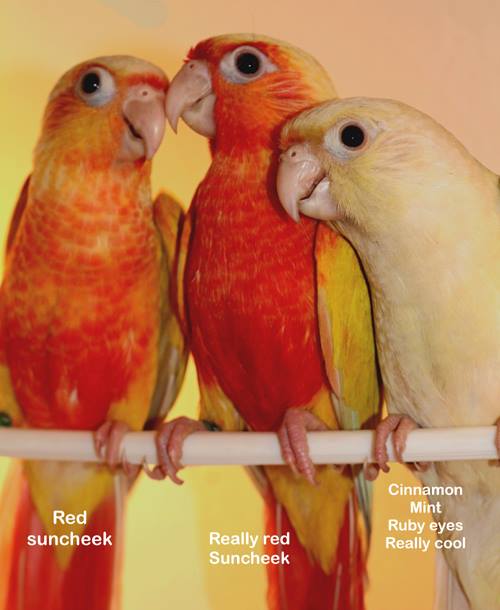 |
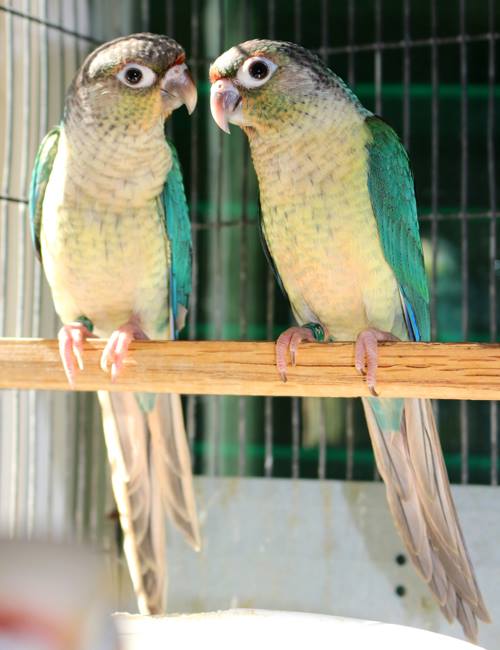 Pineapple Turquoise Conures |
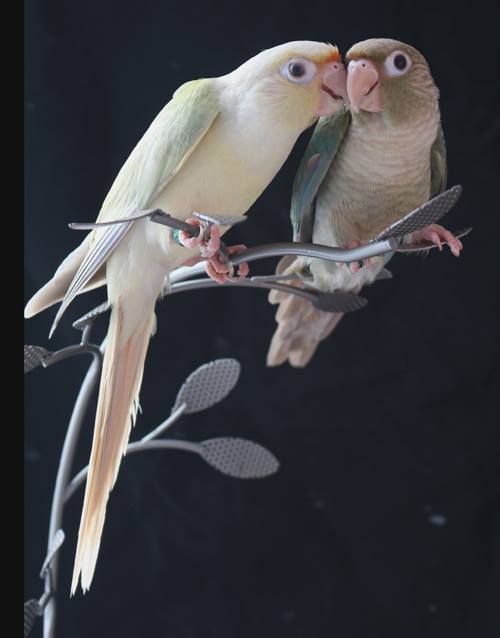 Mooncheek and Cinnamon Turquoise |
 |
 |
 "Pineapple" Green-Cheeked Conures |
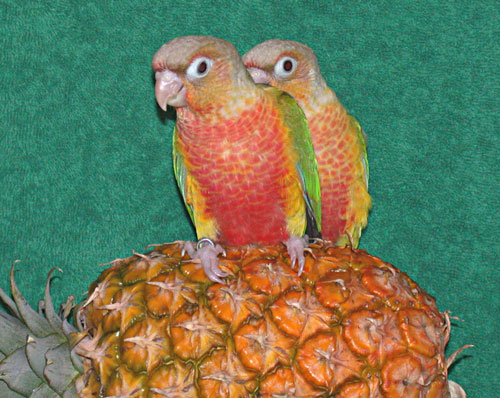 |
one of our lovely colors,
the Moon Cheek! Moon cheeks are now available! RARE MUTATION COLORS! click here for photos and an explanation of colors and genetic chart |
|
rare color mutuations,
created by owner, Steve Garvin
See
our newest mutation colors: page one, and
page two with our 2021 babies!
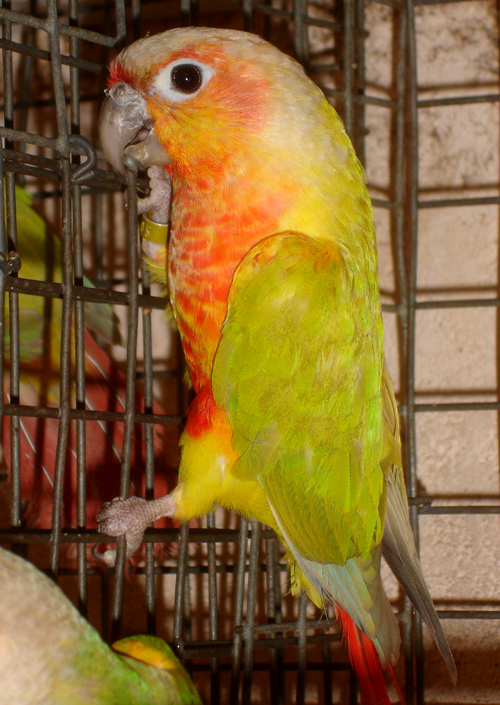 visual American Dilute/Yellow-Sided Conure |
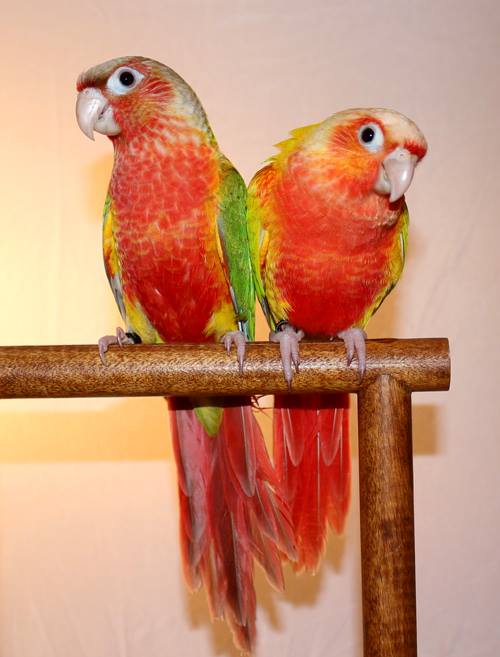 Red-faced Pineapple and Red-faced Suncheek |
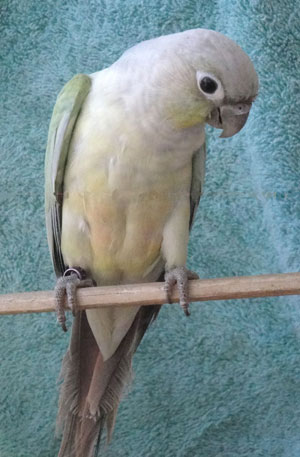 Mint Green-Cheeked Conure 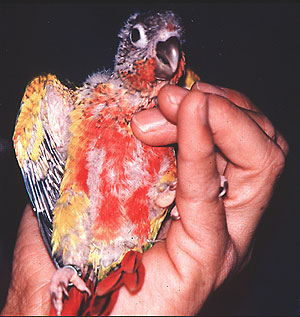 Yellow-Sided Green-Cheeked Conure 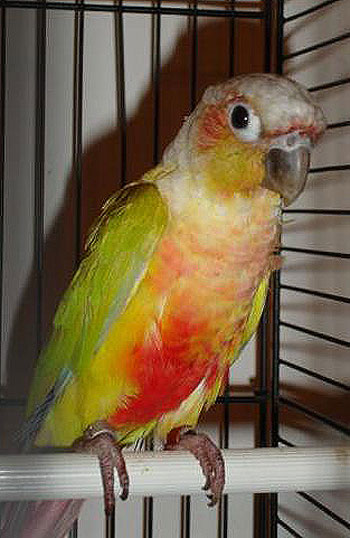 American Dilute |
 Moon Cheek and Dilute Yellow-Sided  |

|
|
This is a gorgeous mutation color developed by Steve Garvin/The Feather Tree. American Dilute/Yellow-Sided/Cinnamon.  Suncheek (bird at bottom of image) Suncheeks, images above & at right 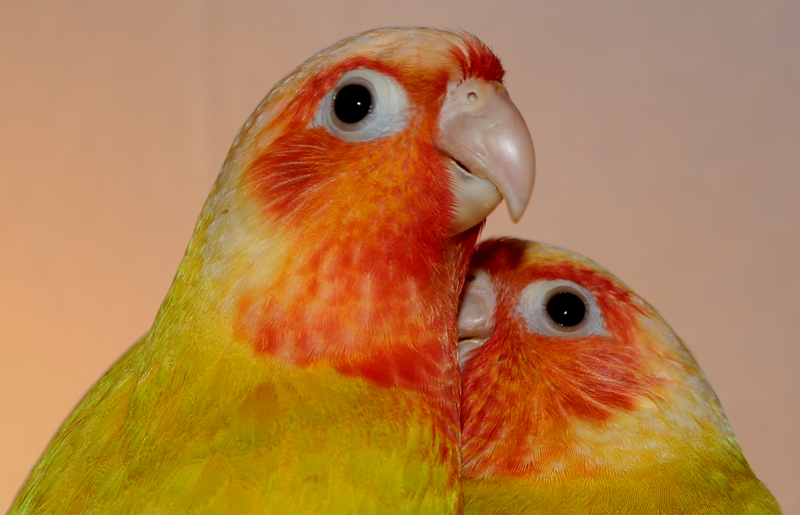 new! Red-Faced Suncheeks! (photos above and below)  |
  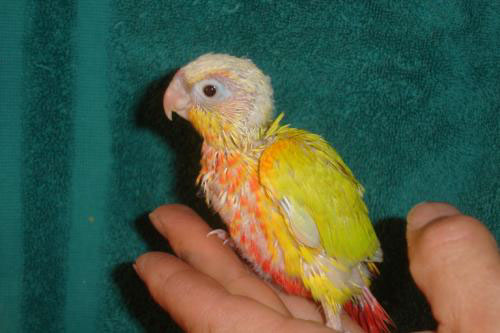 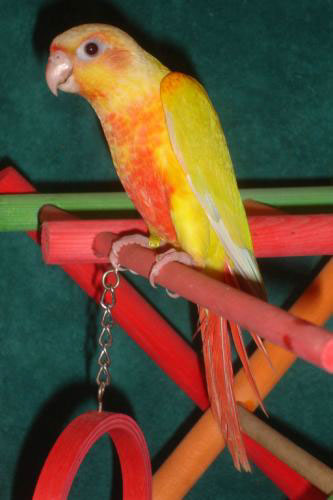 |
 Green-cheeked Conure color mutation; we call it Pineapple. |
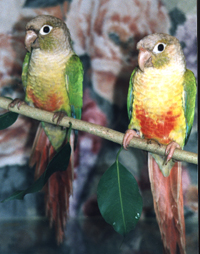 The Green-cheeked on the left is a Fallow; the bird on right is a Pineapple. |
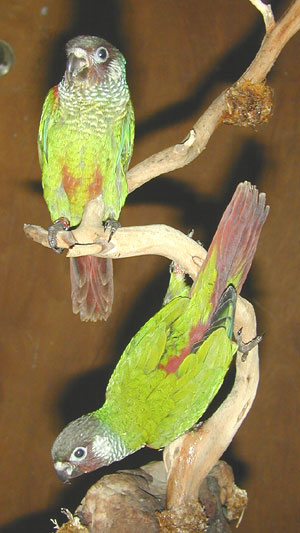 |
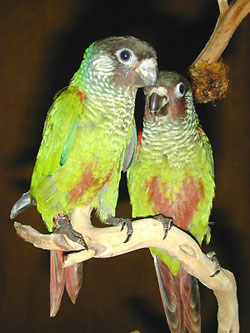 These are baby White-Eyed Conures from the 2000 season photos by Gail J. Worth |
|
|
 and a Pineapple on the left |

|
|
conure color mutation photos |
|
|
article on Yellow-Sided Conures |